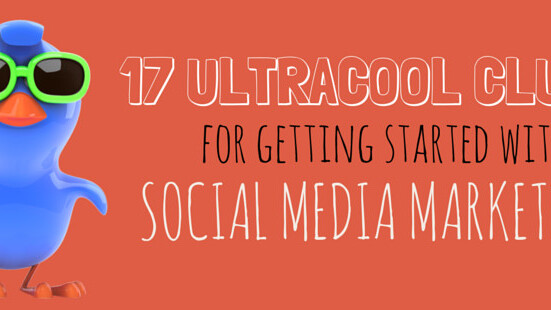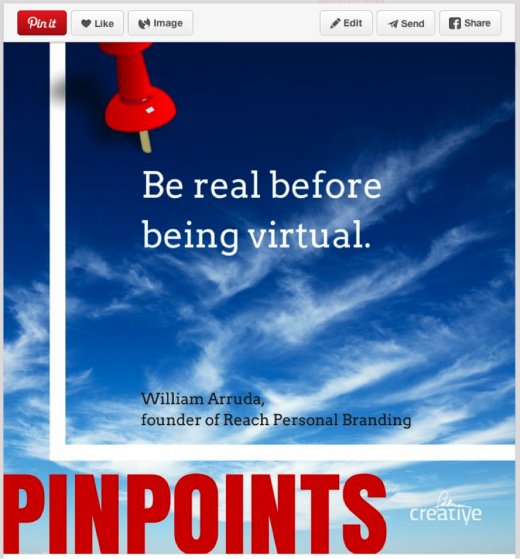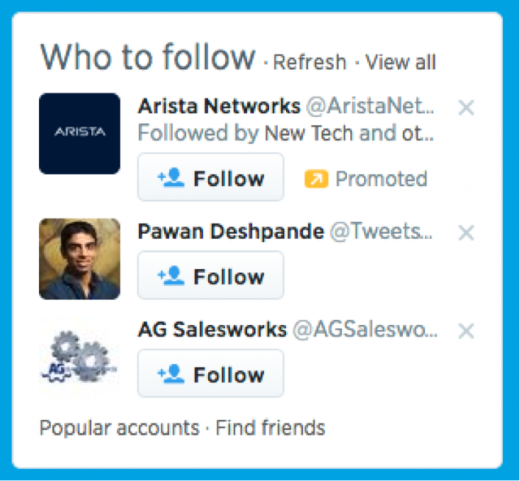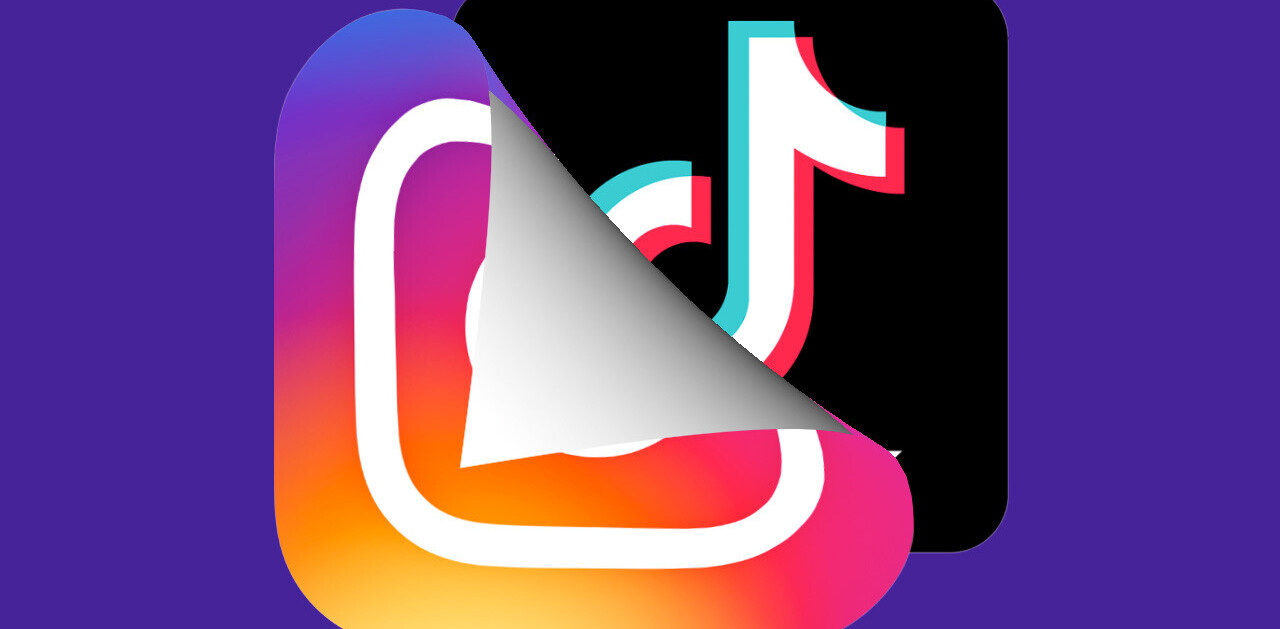
Barry Feldman is a content marketing consultant, copywriter, social media advisor and more. This post has been adapted from an original version on his blog, Feldman Creative.
Just four years ago, I felt like you do. Social media was another language. Foreign. Frightening.
Your insecurities are natural. Will I look lame? Am I too late to the party? Will anyone care what I have to say?
Let ‘em go. Relax. Social media is a conversation. You can join any time. Join now. You’ll be welcomed.
Social media is not a trend, it’s essential. Just as your customers rely on the phone and email, they rely on social media. It’s where you connect. To believe otherwise can limit and threaten the growth of your business or career.
I intend to help you blast through the hardest part: getting started. Right here. Right now.
Here you go: the essential how to guide, no experience required. I’ve created an e-book for you, which you can view here. Also, the blog post the ebook is based on is below for you convenience.
Be selective
Your early foray into social media might seem a bit daunting and it can indeed quickly overwhelm you if you try too much, too soon. Don’t make this mistake. There’s no need to dive headlong into a long list of networks, or even the top four, right out of the gate.
Pick just one or two. Each will have a learning curve, but none is so complex that you won’t be able to grasp the basics and begin.
Naturally, the question on your mind now is, which social media networks make the most sense for you? The answer: the networks your customers prefer. Dig in a bit to find out which networks they’re using. Visit their websites, or simply ask them.
Track competitors
It’s likely your competitors and professional peers can steer you in the right direction. Identify a handful of companies in your space that are active in online marketing.
Visit their sites. Are they blogging? The number of shares they get on their posts may indicate the most active media channels.
Do they have social media icons? Look for the f, g+, in, P, bird, and camera logos (that is, Facebook, Google+, LinkedIn, Pinterest, Twitter and Instagram). These are the likely suspects.
Click through to their social media pages. Do they have sizable followings? Is there a lot of activity there or do things look a bit static?
You want to be where the conversations are happening. After looking into several competitors, it won’t be hard to figure out where the action is. Go along with the crowd. Get started with the one or two networks where you’ve determined competitors and the market at large are connecting.
Factor in influencers
In addition to competitors and customers, it’s helpful to consider the social media activity of other influencers. The most influential social media players are generally writers and publishers. Which websites, bloggers, and authors have authority in your industry? You might discover some are active with video and podcasting as well.
The experts in your field are likely to have established audiences, which should help you make smart choices—and provide good examples of how to interact in various media.
Create a thoughtful profile
Every social media network offers you the opportunity to create a profile. You can get by with just completing the required fields, but you’ll be sabotaging your success if you do. Take your profile seriously and do your best to fill it out completely.
Of course, the rules vary widely across social media profiles—from Twitter, where you’ll have only 160 characters to work with, to LinkedIn, where you can write a lengthy bio and post any kind of media you choose. So I won’t be able to give you specific guidance per the channel of your choice. However, consider the following when writing your profiles:
- Use the keywords that are most relevant to your profession to enable others to find you via search. Frequently, you’ll find hashtags (the # symbol) preceding keywords.
- Be professional, but personable. Your profile plays a large part in swaying others to follow you (or not), so be authentic and interesting.
 Avoid applauding yourself unnecessarily. Be humble, but confident.
Avoid applauding yourself unnecessarily. Be humble, but confident.- Post links, where possible, to your website.
On his Twitter profile, marketing professional Michael Brenner wisely includes numerous keywords and links and presents a professional and friendly portrait.
Upload a nice photo
Too many social media users are inappropriately creative when it comes time to post a profile picture. Do not use family photos, pets, landscapes, or any odd depictions of yourself or persona. Use a simple headshot of you looking into the lens, cropped closely.
In my opinion, you should also avoid logos, if possible. People want to connect with you. In a physical social situation, you wouldn’t introduce yourself by whipping out a picture of your dog.
This is a social situation. Show them your smile.

Upload headers and background images
Again, you must play by different rules across the various media, however, most social networks have followed Facebook’s lead by offering you a space to upload an additional image that acts as a page header (sometime called “cover photo”).
On Twitter, you also have the opportunity to customize your page’s background.
Put some thought into this and your profile page will become that much more welcoming. You might elect to show your city, workspace, or the like. Commonly, marketers will use graphics from their website or something representative of their brand, which is wise.
It’s unwise to neglect your header image because a generic one will be automatically placed there creating the impression you don’t care.
Learn the network’s features
Yes, you’re going to need to learn how your network of choice operates. They have much in common, but all differ in significant ways. Invest a little time in learning the ropes. You need not read books or enroll in a course (though you have that option). Instead, acquaint yourself with the network you’ll use by:
- Asking for some help from a friend.
- Downloading an eBook or guide.
- Searching for blogs which offer guidance from experts.
Start following members
Your path to engaging on social media begins by following others whose updates will appear in your feed when you sign-on. Don’t overthink this process. You can always reverse your decisions later by unfollowing, so fear not and simply begin following folks.
- Start by following people you know.
- Most networks will suggest people to follow based on your profile. Go for it.
- Enter keywords in the search tool to find people with common interests.
- Follow influencers and bloggers in your niche.
- Consider following those who follow the people you follow. (You follow me?)
- Follow customers.
- In a short time, people will begin to follow you. Follow them back.
Listen
In social media, the word “listen,” really means “look.” Translation: though it’s tempting to being posting immediately after joining a social network, you’ll do yourself a world of good by observing how others behave and interact. You’ll pick up on nuances of the network. You’ll form conclusions about what is good and bad protocol.
There’s no formula for how long or how much listening you should do, but you will indeed learn a lot by watching from the sidelines to begin with.
Share
The best thing you can do to build relationships via social media is to share the content you discover and enjoy. Social media is very much reciprocal. People will notice and appreciate you have taken the time to share their blog posts, images, video, etc., and will likely return the favor.
Social media experts often claim as much as 80% of your updates should be shares. I don’t wholeheartedly agree, but do suggest thoughtful sharing is a regular and large part of your social media activity.
Endorse
Endorsing other people’s updates may be slightly less significant than sharing, but it’s thoughtful and won’t go unnoticed. It’s also easy and can be done with just a click.
Of course, the most well known of all endorsements is the Facebook “Like,” a thumbs-up icon. Each network has one or more forms of endorsements including a + on Google, like on LinkedIn, and “favorite” on Twitter.
Don’t endorse every update you read, but do it when you mean it. You’ll find plenty of content and comments worthy of a click.
Comment
The heartbeat of social media is conversation, so while sharing and endorsing can be thoughtful and smart, commentary is better still. When you get rolling and your network grow into the hundreds or thousands, you won’t have the time to comment on every update you see. However, the best content you come across will provoke thoughts, just like any conversation.
Express yourself. Agree. Disagree. Answer questions. Ask questions. Cite examples. Offer links. Say thank you. Again, at its best, social media is a conversation and when you put something into it, you get something out of it. It’s fun. Enjoy it.
Join groups
The social media you joined is a biiiiiiig network with hundreds of millions of members. You have the option to interact with more like-minded people by joining (or creating) far more focused groups, communities, chats (and so forth). Don’t hesitate to try them.
Along your journey, you’ll find some of the most valuable exchanges occur within groups and as result of your participation. opportunities continuously present themselves. Most social media offer opportunities to join or create special interest groups.

Be consistent
You need to budget time to do social media. How much is up to you, but understand you’ll be taken far more seriously if you’re active on a daily basis.
Yes, you can shut it down for a day, weekend, or take a break without threatening your good standing. The caution I aim to make here is if you merely check in with a post now and then, you probably won’t be taken seriously.
Don’t pitch
If you want to buy advertising on social media, do it. Most will accommodate you and many are quick to attest to its effectiveness. However, outside of the “sponsored” opportunities some social media offer, relentless sales messages are not tolerated. The more you pitch your products and services, the more you’ll be rejected.
However, you need not conclude social media isn’t for marketing. In fact, it is. The trick is to market with a utility mindset. When you teach, advise and help people, your contributions will be embraced.
Promoting an event, special offer, sale, new product or the like is all fair game. You simply need to strike a balance so as to not put people off. Your updates should be valuable. Try a softer approach to selling. Think of your offers as friendly invitations. It’s far more effective to pull than push on social media.
Promote your involvement
Of course, as you surf the web you come across social media icons everywhere. And that’s as it should be. If you’re going to participate in social media, you’ll want to take advantage of every opportunity to let it be known.
Consider showcasing links (usually represented by icons) to your social sites across all customer-facing touch points including your:
- Website
- Online properties (including other social media)
- Email signature
- Newsletter
- Business cards
- Advertising
Be real

Your digital presence is not a veil. Don’t try to be anything other than yourself on social media. Write as you would speak. When you let the authentic you come through you will attract the right people, make the right connections, and accomplish what social media is really for: building relationships.
Read next: A practical guide to writing an effective social media policy
Get the TNW newsletter
Get the most important tech news in your inbox each week.
 Avoid applauding yourself unnecessarily. Be humble, but confident.
Avoid applauding yourself unnecessarily. Be humble, but confident.




